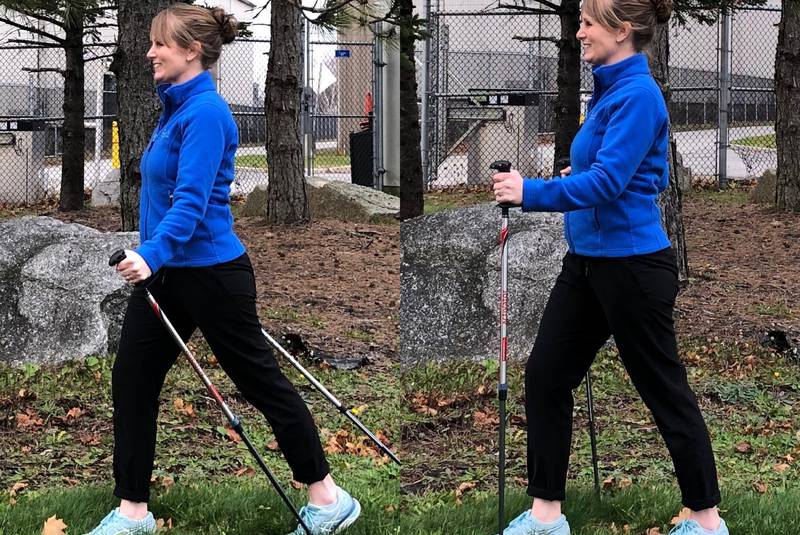Book an assessment with Zoomers now!
Use our online booking tool to find a time that works for you!
If you’ve started to notice people walking with poles, you’ve probably also noticed that they seem to use different techniques. Sometimes this is due to insufficient training; often it is because they are using poles for different reasons.
When people start experiencing knee pain, they typically start wondering “Where to go for knee pain near me?”. Walking poles are a great option for people with knee pain and Zoomers Physiotherapy prides itself on equipping its staff with the education they need to inform its clients on the benefits of walking poles and how to optimize their use based on your need.
So what are walking poles and how can they help you?
Two primary reasons for their use are to increase the fitness demand of walking and improve the quality of walking. Nordic walking is typically used to increase the fitness demand associated with your walk. The Activator (R) technique is typically used to improve the quality of your walk by encouraging good patterning. Using the Activator (R) technique can improve comfort and balance when walking. I’m going to review the different aspects and benefits of each of these techniques.
Nordic Walking
Nordic walking poles have a wrist and thumb strap that allows for a loose grip and ensures proper alignment as you plant each pole. The involvement of the arms and trunk turns walking into a full-body, low-impact workout and can increase the number of calories burned by anywhere from 20-40% in your walk. Using the Nordic walking technique is a great option if you are looking to challenge your body more during your walk.
The arms swing in a slightly exaggerated fashion at your sides with relatively straight elbows. The poles plant behind your body allowing you to push down and propel yourself forward a bit more with each step. Each pole plants at the same time as the opposite foot steps down.
The Activator (R) Technique
The Activator (R) Poles and technique were developed by an Occupational Therapist in British Columbia. For those of us wondering “Where to go for knee pain near me?”, these poles are typically more beneficial than the Nordic technique. These poles do not have a wrist/thumb strap but do have a ledge to allow more downward pressure through the pole. The ability to push down with more force into the pole can decrease joint pain in the lower body and increase stability (which is why we might recommend them to those wondering: “Where to go for knee pain near me?). The upper body and trunk involvement provide extra calories burned in each walk but to a lesser extent than with the Nordic walking technique.
The elbows stay in a bent position (approximately 90’) in this technique. Each pole is planted in front of the body, in line with the opposite forward-stepping foot. It is this forward planting pole position that allows better off-loading of painful joints and can increase confidence with steadiness throughout the walk.
Of course, if walking poles are new to you, it is a good idea to get some formal training on their use. The techniques aren’t particularly difficult but they do take some practice and, because of the volume of movements you do in a walk (ie: 500 pole plants per side in a 10-minute walk), it is important to make sure you’re set up for success. As beneficial as I think they are, I have seen a number of people come in with either neck or shoulder pain as a result of their improper use (technique, frequency, volume, etc). Before you get started, get a little training to make sure they give you the boost you’re looking for in your walking program. If you’re wondering “where to go for knee pain near me”, booking with a Zoomers physiotherapist is a great place to start!
Book an assessment with Zoomers
Use our online booking tool to find a time that works for you!


